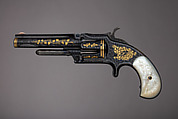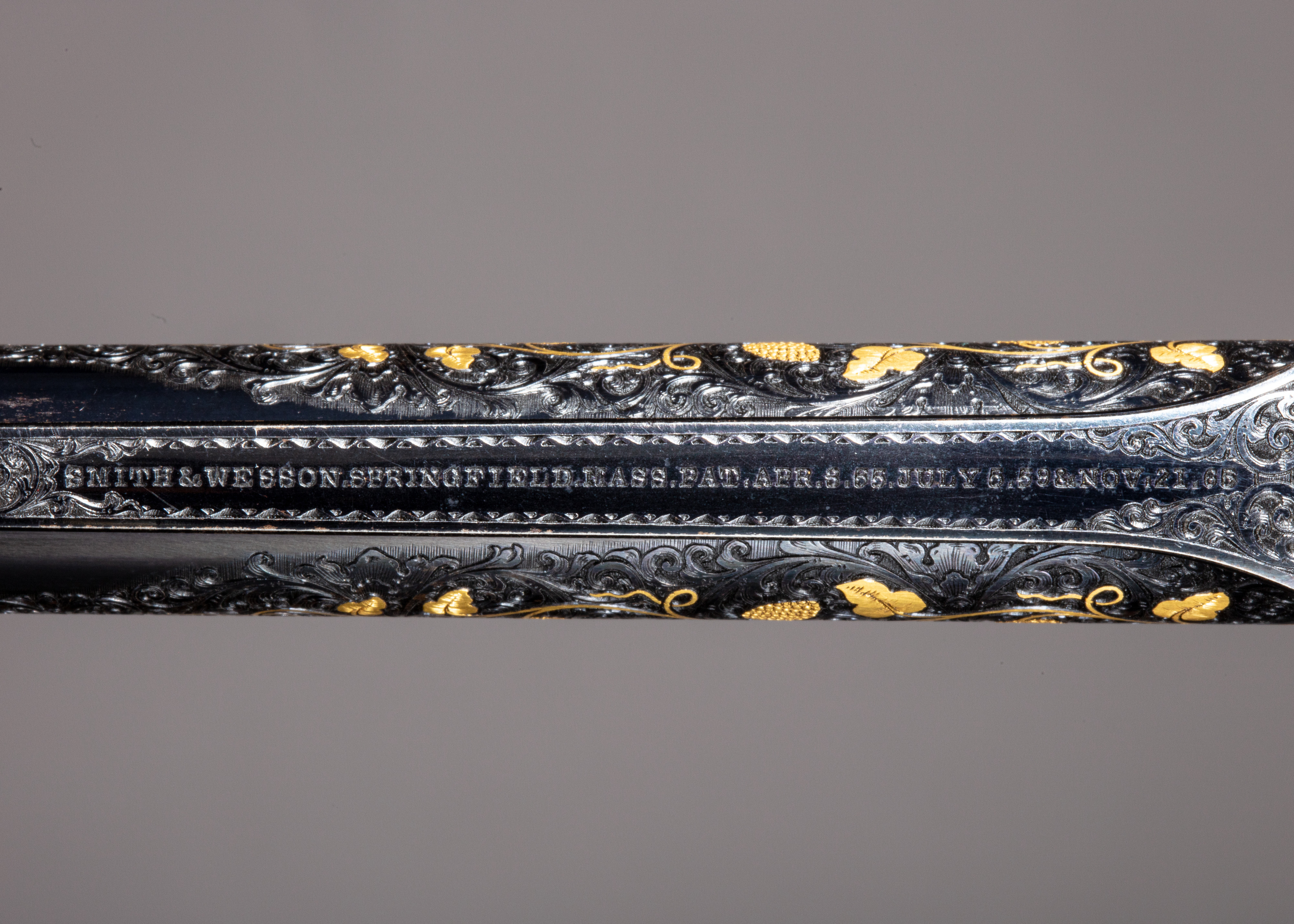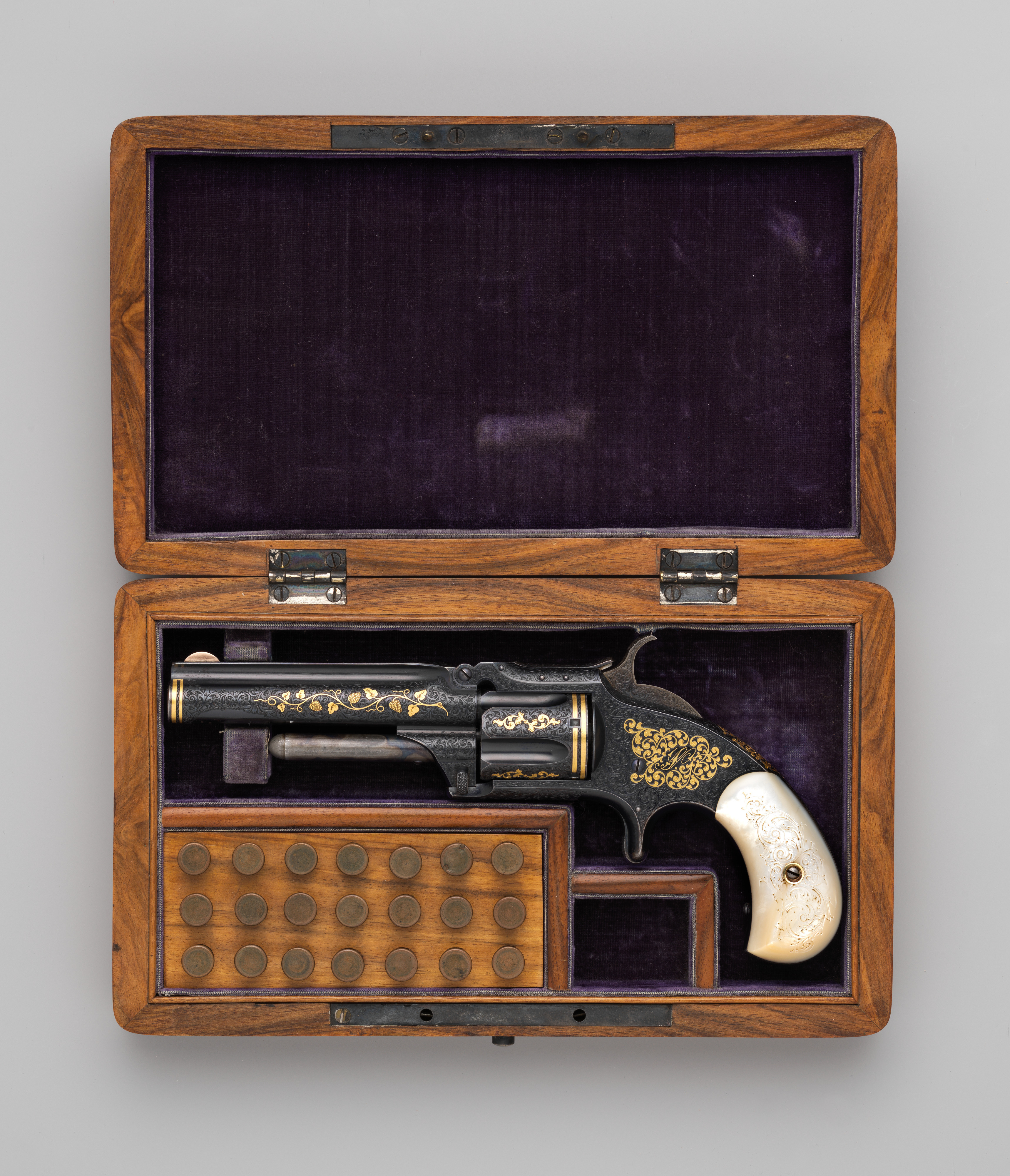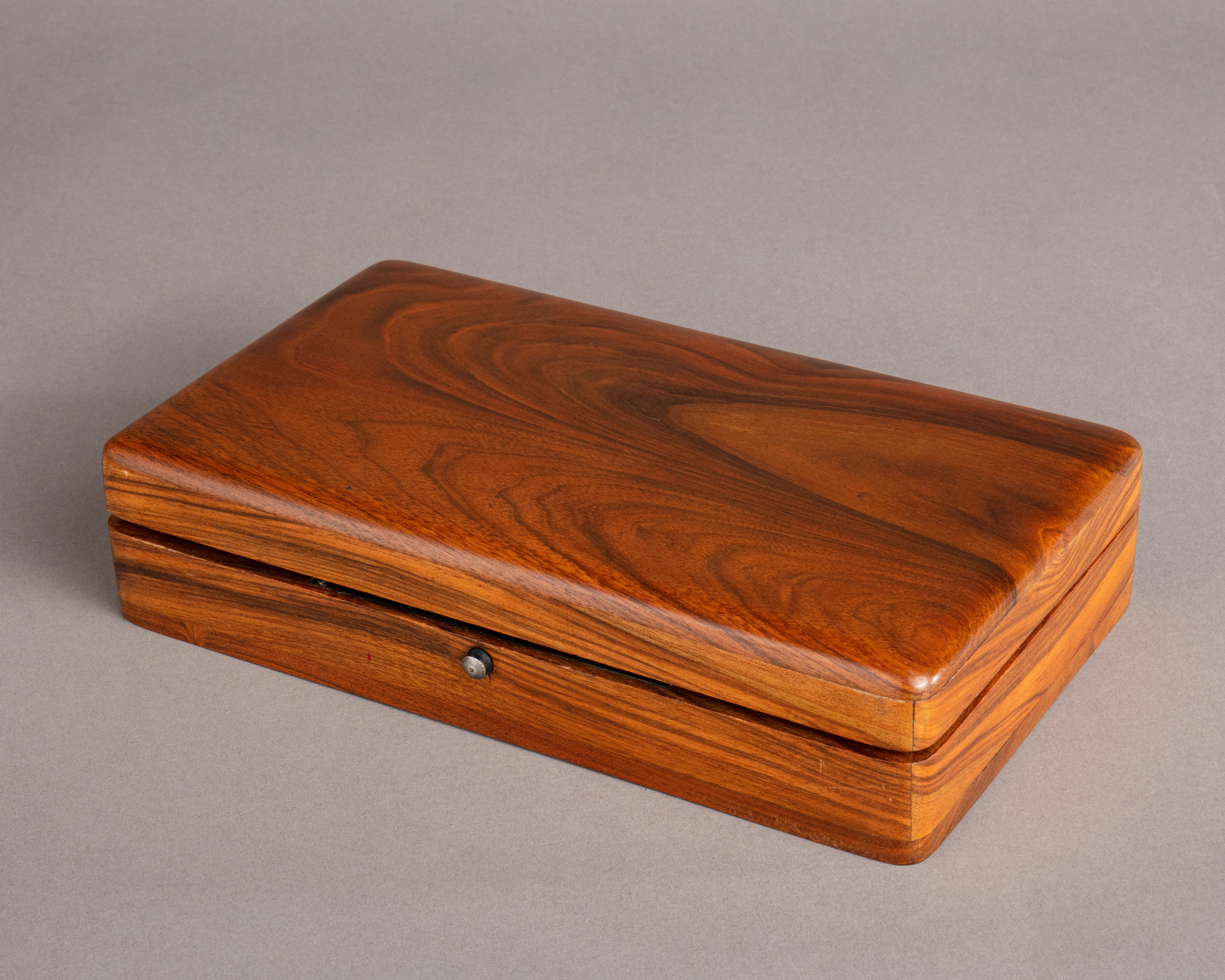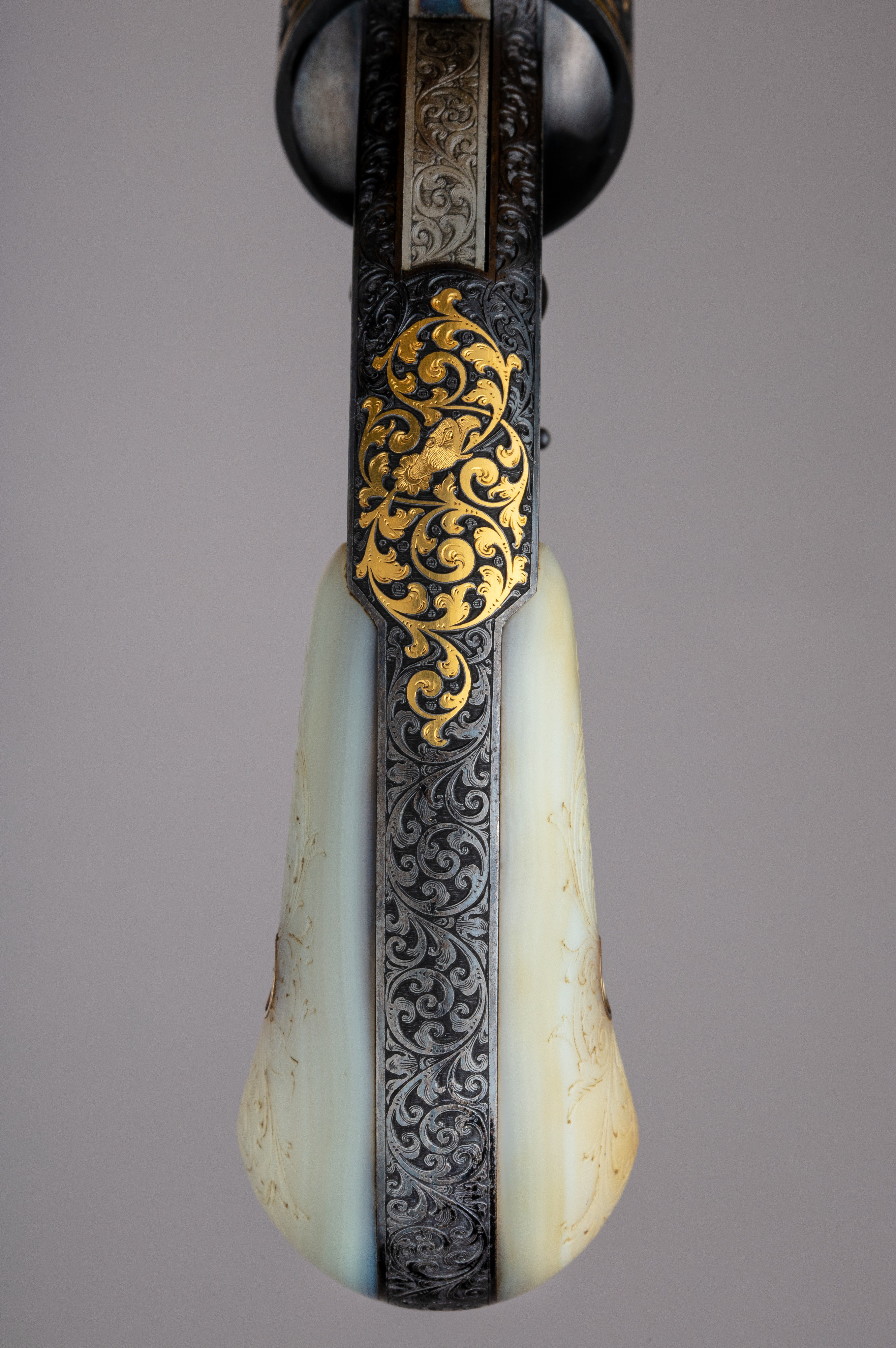Smith & Wesson Model 1 ½ Second Issue Revolver (serial no. 30451) with Case
Manufacturer Smith & Wesson American
Decorator Gustave Young American, born Prussia
This pistol belongs to an exclusive group of Smith and Wesson revolvers with extensive engraved and gold inlaid decoration, produced for display at international exhibitions and as gifts to heads of state, celebrities, and important company officials in the late 1860s and 1870s. Smith and Wesson presented one to President Ulysses S. Grant (1822–1885) in 1870 (now in the Autry Museum of the American West, Los Angeles, CA, acc. no. 2012.2.31) and it is likely that The Met's revolver, decorated in a nearly identical fashion by the same engraver one year earlier, inspired its design.
The decoration was executed by the German-American engraver Gustave Young (1827–1895), who emigrated to the United States in 1853 and engraved for Colt from 1853–1858 before his long association with Smith and Wesson. This pistol stands out as one of his greatest achievements and, more broadly, testifies to European immigrants' central role in shaping American firearms' decorative traditions from the 1850s forward. Like other American firearms from this era decorated by immigrant engravers trained in Germany, including Colt revolvers and Winchester rifles in The Met's collection, its engraving echoes contemporary trends in western European firearms decoration and derives from designs published in German and Belgian firearms pattern books of the 1840s–50s.
Preserved with its original case fitted with dummy rounds that further confirm its intended use as a display piece, the revolver features a monogram on the left side of its frame that has yet to be deciphered.
Due to rights restrictions, this image cannot be enlarged, viewed at full screen, or downloaded.
This artwork is meant to be viewed from right to left. Scroll left to view more.
